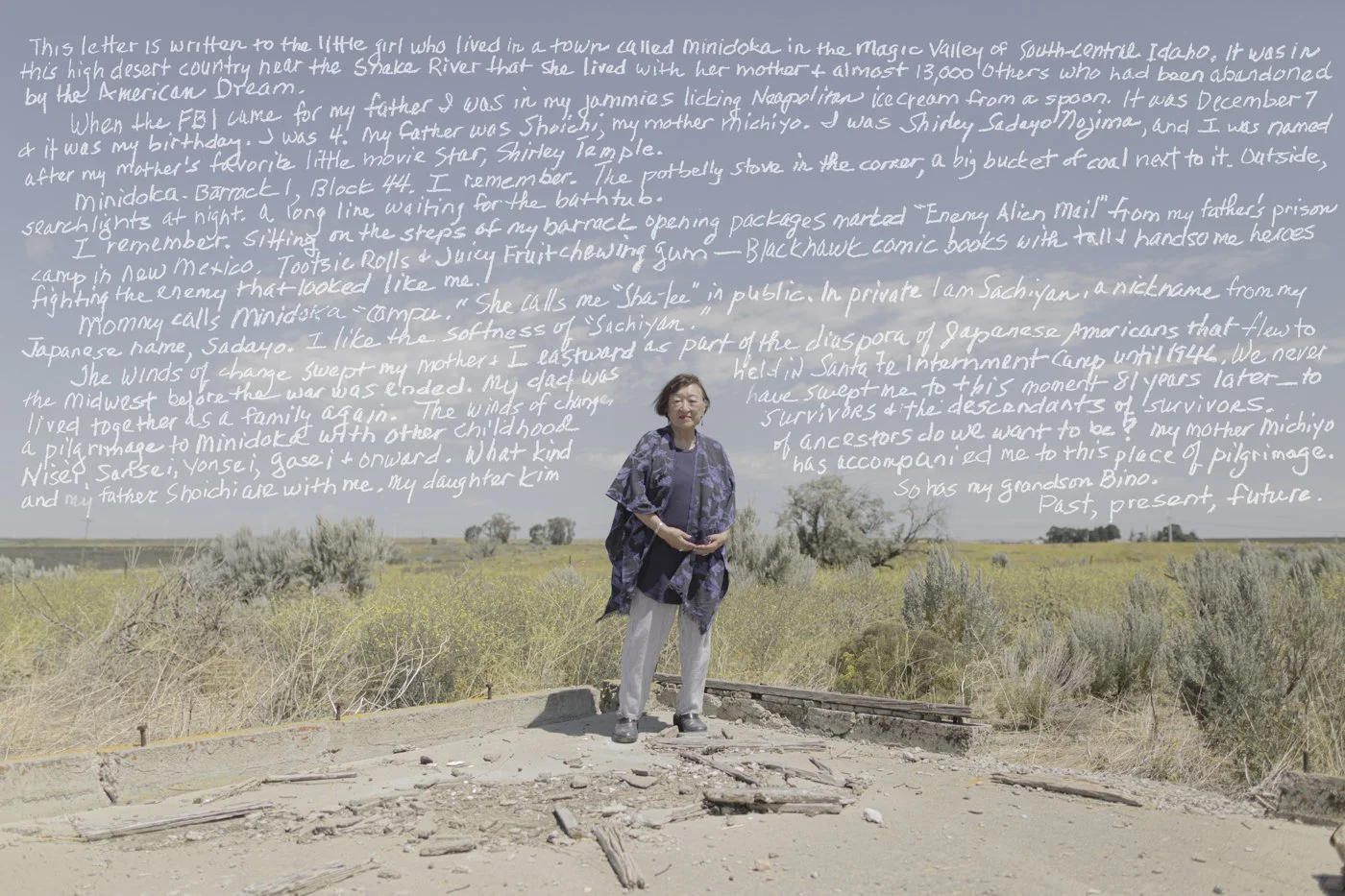
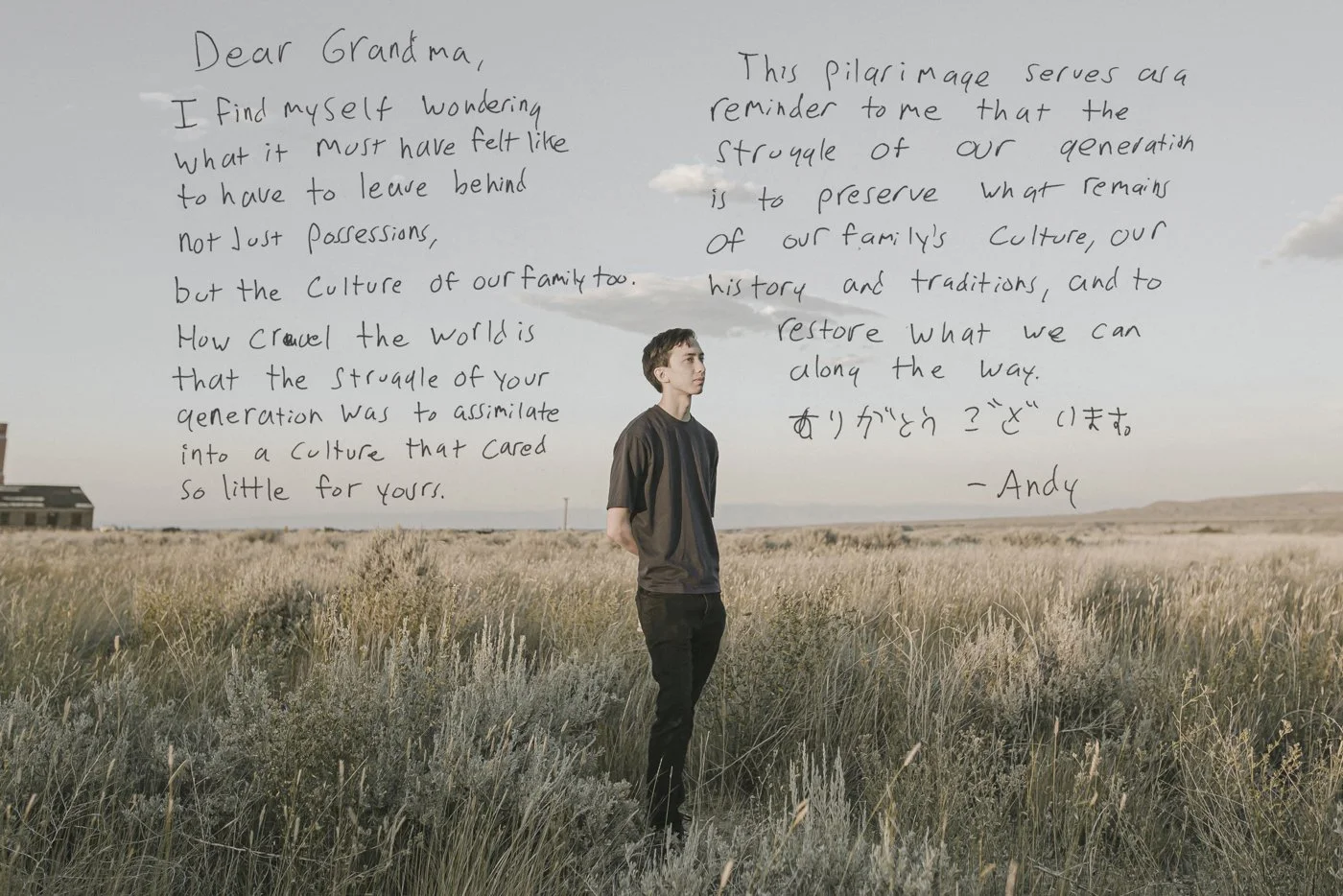
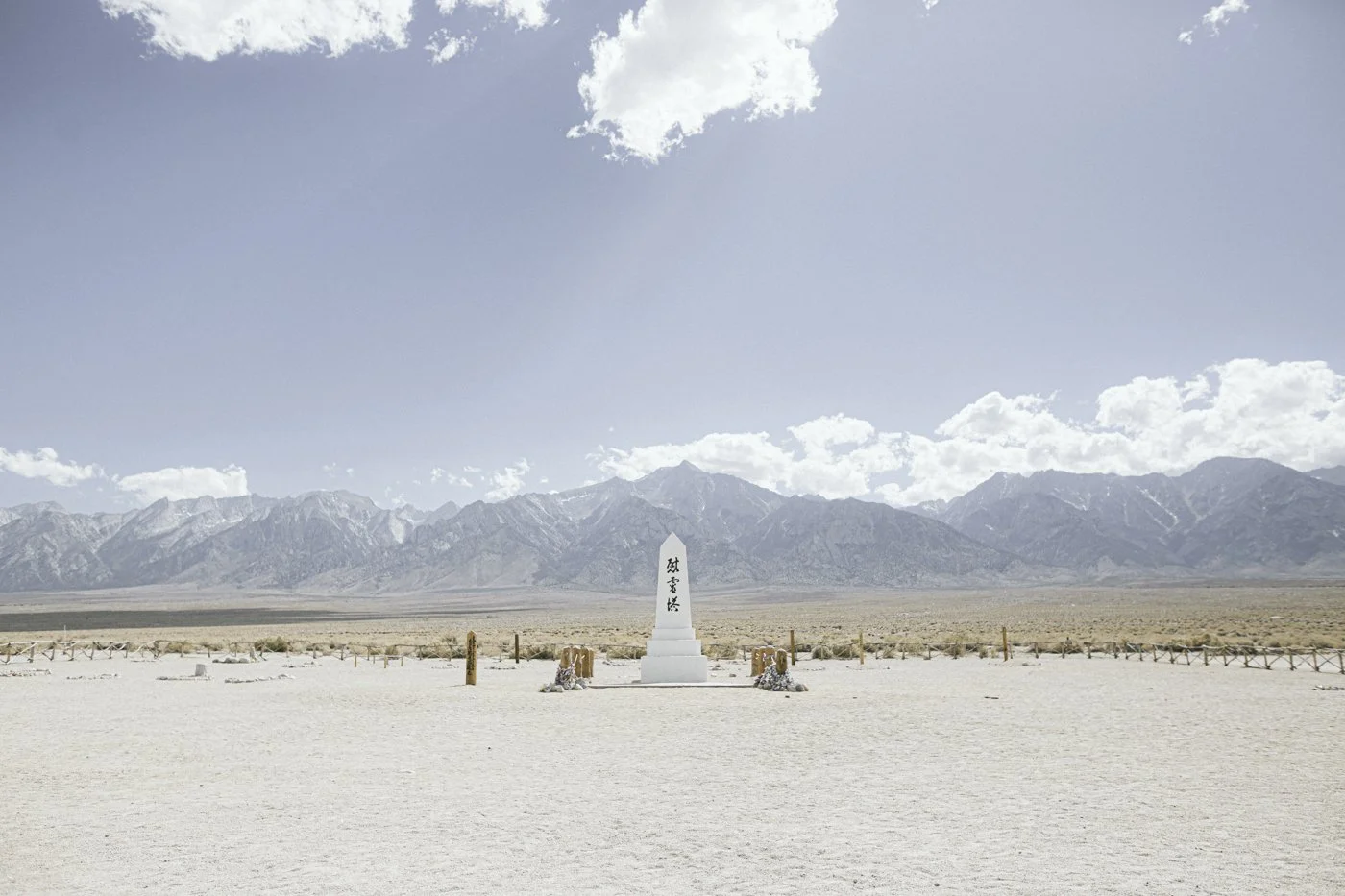
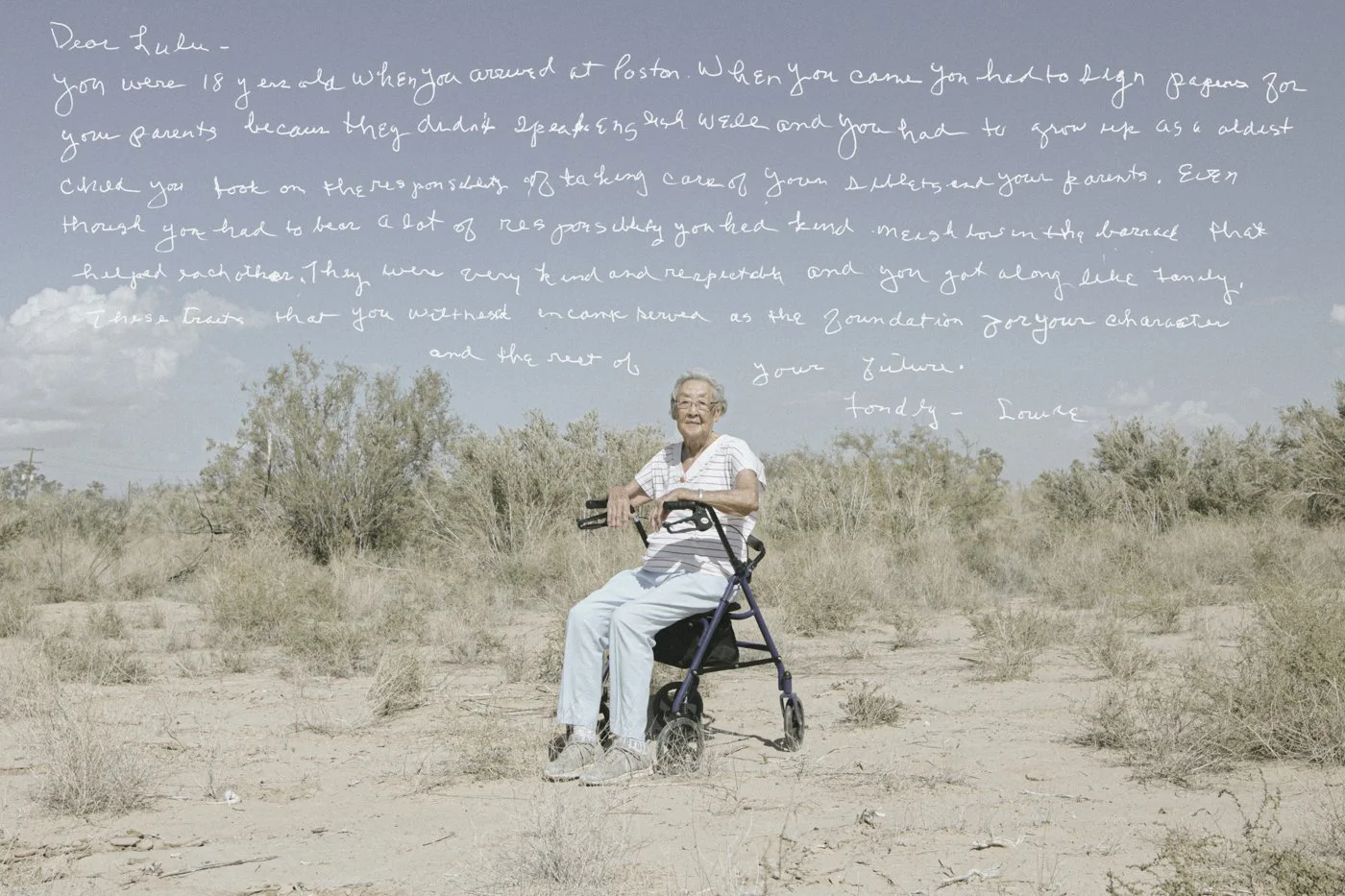
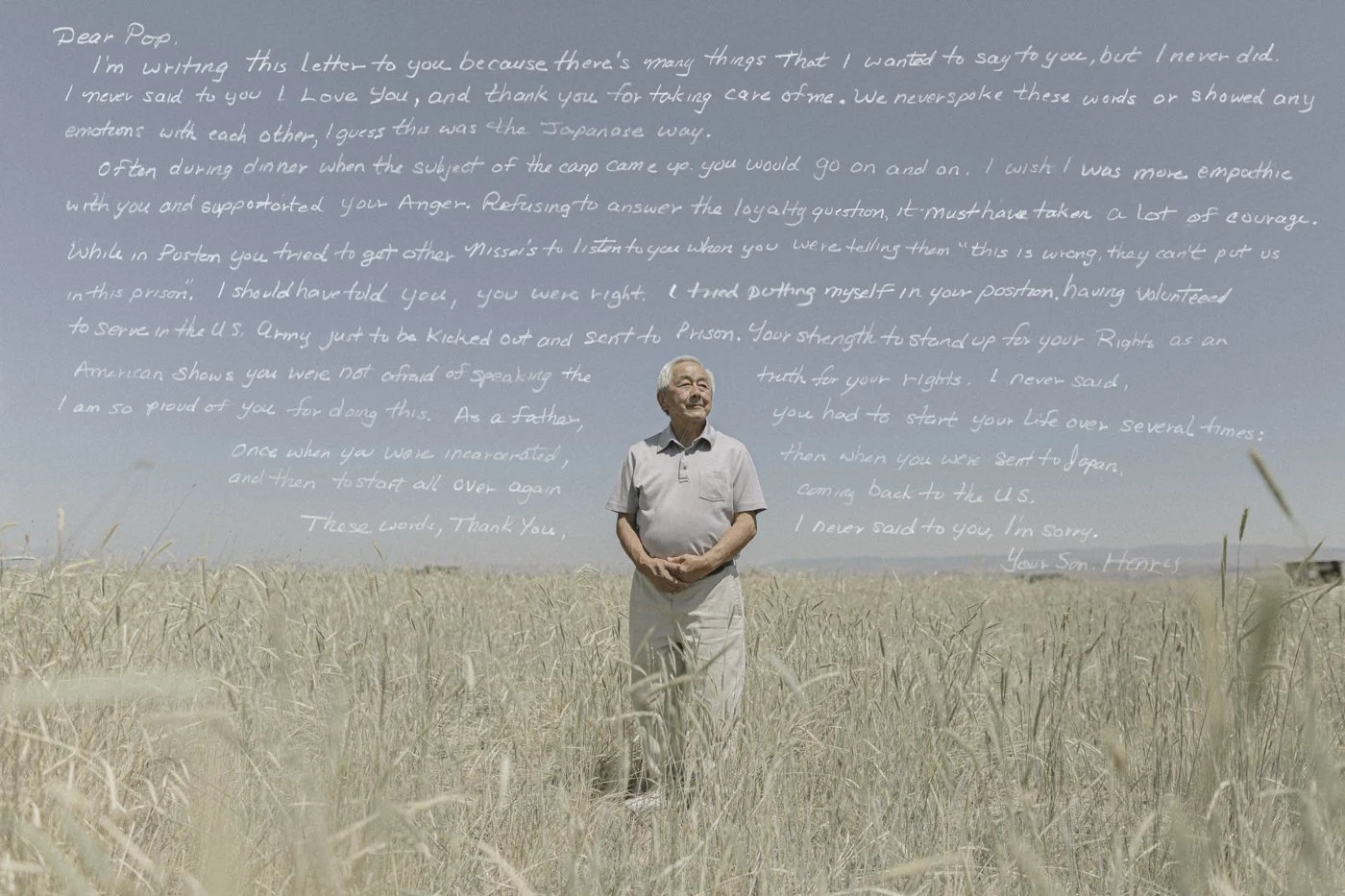
-
Following the Pearl Harbor attacks on December 7, 1941, President Franklin D. Roosevelt issued an executive order authorizing the forced removal and incarceration of 120,000 people of Japanese ancestry—two-thirds of whom were U.S. citizens—into concentration camps. Entire families were uprooted from their homes and sent to hastily constructed detention centers, some as crude as horse stalls, before being imprisoned in remote concentration camps for up to four years. The trauma of displacement, incarceration, and family separation continues to shape lives today.
Since the war, former incarcerees and their descendants have been making pilgrimages to these former camps. The word “pilgrimage” traditionally implies a journey to a sacred place, but for this community, it is a return to a site of trauma. Why revisit a place of forced confinement and suffering? Some return to commemorate a family member. Others seek healing and closure. Many find community and belonging by gathering together in these desolate landscapes.
There are ten camps in total, scattered across the country. Some are carefully stewarded by local communities and the National Park Service, while others are vulnerable to vandalism and neglect. Some face threats from nearby developments, such as the construction of a three-mile-long, security fence at Tule Lake or a 76,000-acre wind farm within the viewshed of Minidoka. Former incarcerees and their descendants are actively fighting to preserve the physical integrity of these sites.
This project documents the camps as they stand today and the former incarcerees and descendants who journey back to them. Each collaborator is asked to sit for a portrait and handwrite a letter: former incarcerees write to their younger selves during their incarceration, while descendants write to a former incarceree they are commemorating.
Through these personal letters and photographs, we explore a key question: What does it mean to be American? As racism, xenophobia, and authoritarianism—the same forces that led to the mass incarceration of Japanese Americans during World War II—resurface today under the guise of national security, these Japanese American families reveal the intergenerational impact of this dark chapter in U.S. history.
To see the entire project, please visit - thecampsamericabuilt.com.
-
This work can be exhibited in two formats: as physical photo prints or as a digital projection. In the print format, the ideal dimensions would be 16x20 inches, allowing the letters to maintain their intimate, handwritten feel while still being legible. Alternatively, in the digital projection format, the handwritten letters animate over the portraits while an audio recording of each individual reciting their letter plays, creating an immersive and layered storytelling experience.
